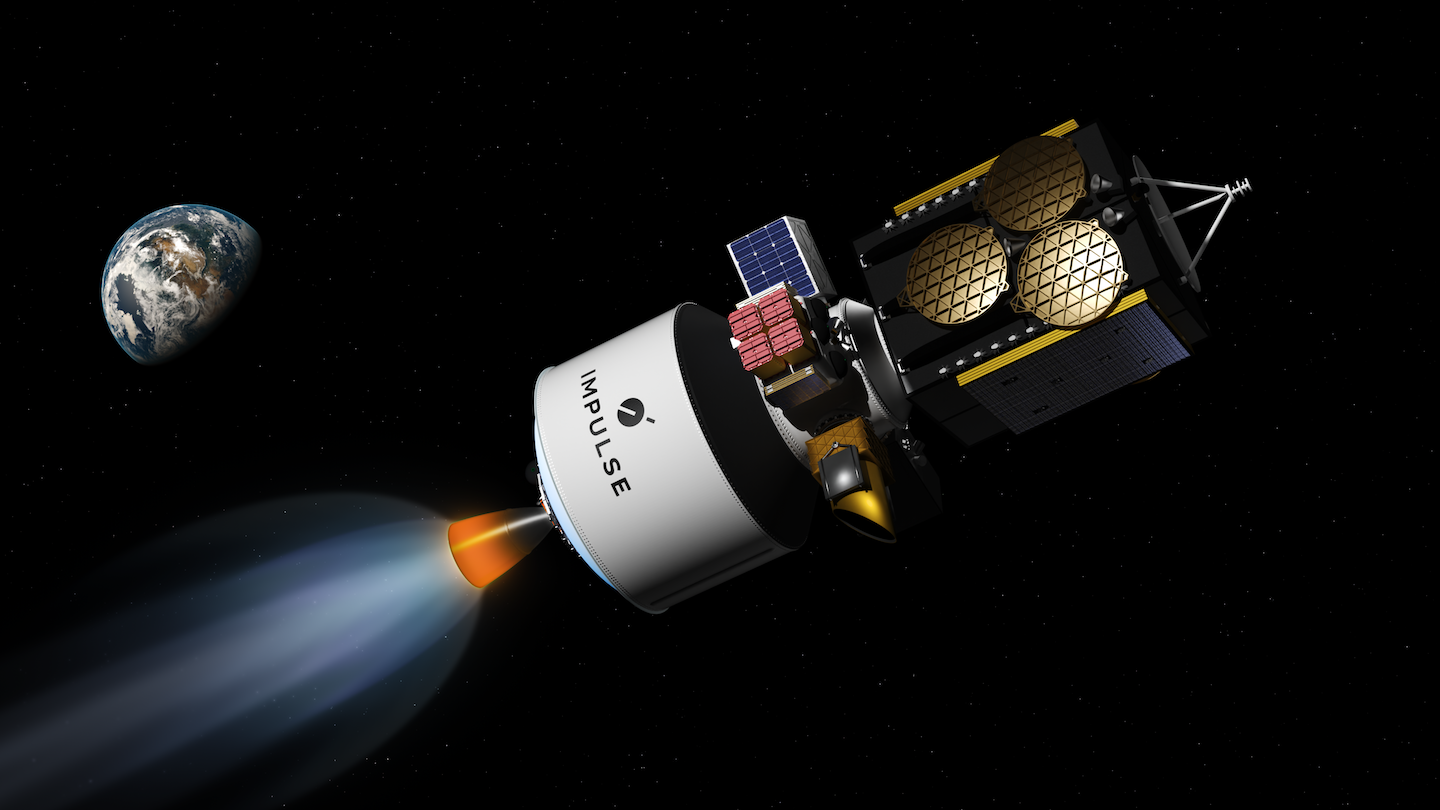Latest News

Rendering of the Impulse Space Helios kick stage. Photo: Impulse Space
Impulse Space is working to simplify access to Geostationary Orbit (GEO), unveiling a new high-performance kick stage on Wednesday called Helios, designed to take 5 tons from Low-Earth Orbit (LEO) to GEO in less than a day.
Impulse Space is led by CEO and founder Tom Mueller, who was a founding member of SpaceX and designed the Merlin engine. Mueller spoke with Via Satellite about Helios, which is designed for communication satellites, imaging, defense, and scientific missions.
“This is a product I think is really needed out there. Access to LEO is so easy right now, everywhere else is still hard,” Mueller said. “We want to fix that. We want people to get anywhere you need in space — easily and affordably.”
While the typical way to reach GEO is to book a heavy-lift rocket, or launch to Geosynchronous Transfer Orbit (GTO) and perform orbit-raising over a series of months using onboard propellant, a Helios orbital transfer vehicle can get a satellite to GEO in two engine burns post-launch. Impulse estimates the potential cost savings in the many tens of millions of dollars. The savings could come either in taking a cheaper launch, or not carrying the same level of onboard propellants and missing out on time generating revenue during the orbit raise.
“We think this is going to be the lowest cost access to direct GEO,” Mueller says. “Instead of booking a larger launch vehicle like a [Falcon] Heavy or ULA’s biggest vehicle, you can fly a single-stick Falcon 9 and take it directly to GEO.”
“It’s basically a kick stage,” he added. “An upper stage for a medium or or heavy launch vehicle that can go directly to GEO from a very low LEO orbit.”
Helios can deliver payloads not only to GEO, but also to Medium-Earth Orbit (MEO), sun orbits, lunar orbits, Lagrange points, and other planets in the solar system. It’s also designed to be compatible with the Starship rocket when it is operational.
Helios is powered by a new 15,000 lbf (67 kN) engine called Deneb, which is designed to burn up to 14,000 kg of propellant across each mission. It uses the nontoxic, high-performance propellant combination of liquid oxygen and liquid methane. The company plans for the first engine test-fires of Deneb for mid-2024, and the first demo launch of Helios is targeted for early 2026.
Mueller pitched the vehicle to a number of large GEO operators at World Satellite Business Week in September, and said there was strong commercial interest. He said it fits in with defense goals as well to have better, faster access to higher orbits.
“The interest has been very good. A typical response is ‘Where were you guys five years ago? There’s an existing market,” he says.
Helios is Impulse Space’s long-haul complement to Mira, a last-mile orbital transfer vehicle for smallsats and cubesats. The company launched the first one into space, the Mira LEO Express 1 mission, on the November 2023 SpaceX rideshare mission. The spacecraft has since successfully delivered a customer payload. In December, Mira also successfully fired all eight of its onboard thrusters. The rest of the mission will demonstrate burns and the capability to accurately change orbits in LEO.
Mueller says Mira was built from a clean sheet design to an operational spacecraft in under 15 months, and he compared it to the early days at SpaceX.
“It was pretty stressful because it was the first time for a lot of us to [build] a spacecraft. There have been quite a few high-profile failures of these first time spacecraft. It was pretty exciting. It reminded me a lot of the early days at SpaceX, the Falcon 1 early flights. Thankfully, we were more successful than that.”
Get the latest Via Satellite news!
Subscribe Now